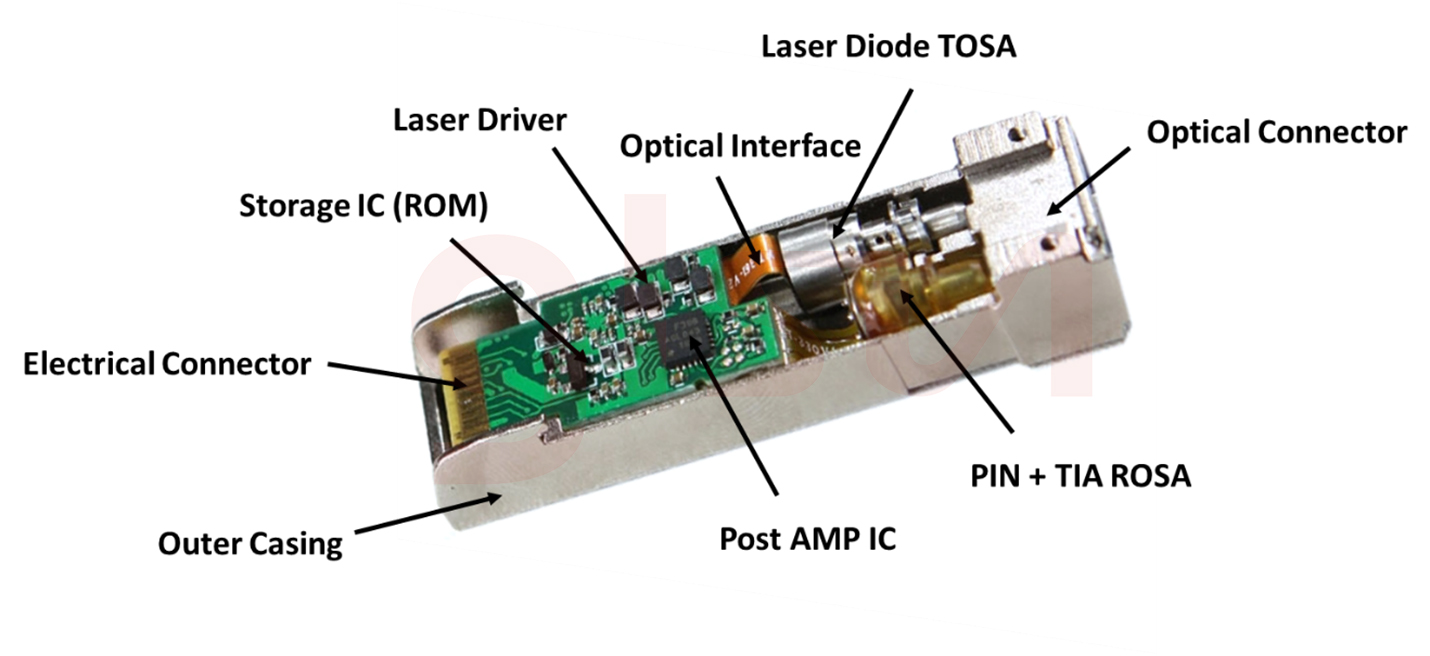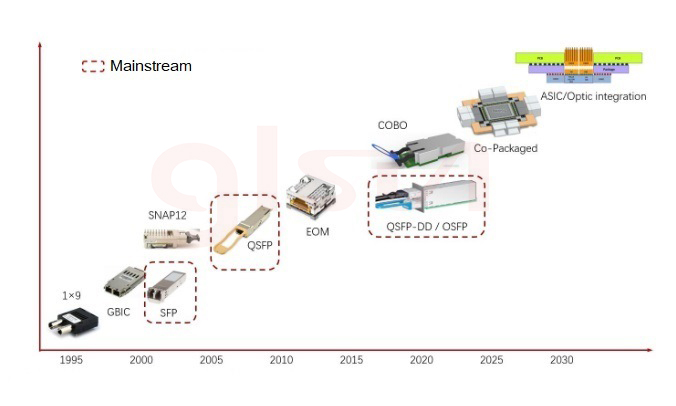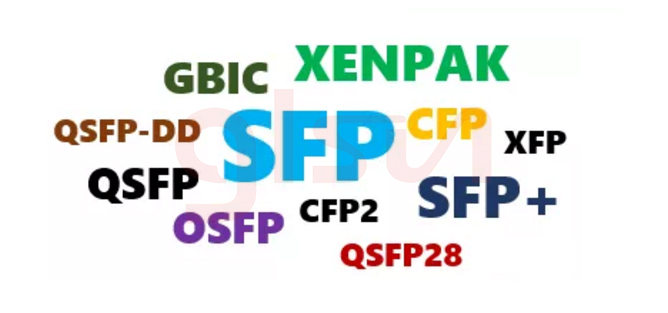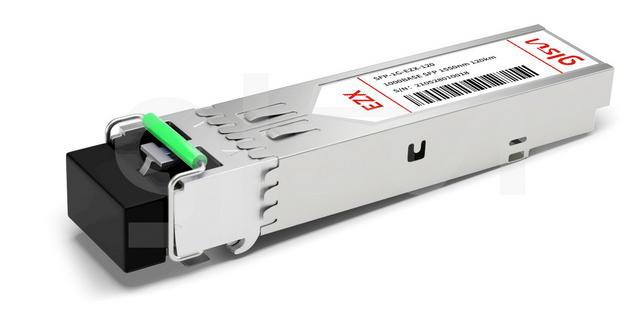Optical transceiver module is the core part of optical communication devices. It uses fiber optical technology to send and receive data through completing the process of optical signal - electrical signal or electrical signal - optical signal conversion.
The optical transceiver module mainly include optical signal input interface, receiver, transmitter, integrated circuit design, radio frequency circuit, digital monitoring and mechanical support part. Optical modules can be widely used in wired network connections such as servers, storage, and networks.

The optical transceiver modules evolve toward silicon optical integration with large bandwidth and small size. With the rapid development of the information technology industry and the rapid growth of data traffic, the performance indicators of optical modules are required to be higher and higher. Data rate, transmission distance, power consumption, and dimension have become important indicators to be considered.
As the optical module technology evolves, new application types are constantly emerging. In the application scenarios of high speed optical modules above 400G, silicon-optical integration will take an increasing proportion and become the mainstream technology in the future.

According to the package type, it can be divided into QSFP, QSFP28, CFP, CFP2, CFP4, CXP, SFP, CSFP, SFP+, GBIC, XFP, XENPAK, X2, SFF and other types. SFP and QSFP have the advantage of high performance and low power consumption, and they are currently used on a large scale. The growing demand for 100G/400G high data rate optical modules will drive the growth of the QSFP, QSFP-DD, and OSFP optical modules market.

The optical module can be classified into 1Gbps, 2.5Gbps, 10Gbps, 25Gbps, 40Gbps, 50Gbps, 100Gbps, 200Gbps, and 400Gbps based on the optical module rate.
According to the market stratification of speed, low-speed optical modules have the largest demand and can be used for broadband users, servers, and enterprise networks access. The higher speed optical modules have less demand, and they are mainly used for long-distance communication of operators and data centers.
Based on the type of optical fiber access, fiber optic transceivers are categorized in single-mode transceivers and multimode transceivers. The multimode optical transceiver module is usually for short distance transmission, ranging from 500m to 2km. Single-mode optical transceiver is usually for long distance transmission, ranging from 10km to 160km.
How to choose an optical module?
To choose the most sui optical transceiver module according to the actual needs, the following aspects can be used as a reference when selecting.
Transmission Rate and Package Type
The transmission rate of optical transceiver modules vary from 100Mbps to 400Gbps, usually the transmission rate is determined by the data transmission rate of the link. However, the optical transceiver module with the same speed has different encapsulation types. In this case, it is necessary to consider what type of encapsulation port dose the application device have. For example, the connection of two 10G SFP+ switches should choose 10G SFP+ optical transceiver modules instead of 10G XFP/X2/XENPAK transceiver modules.
https://www.glsunmall.com/fiber-optic-articles/basic-knowledge-about-optical-transceiver-modules.html




